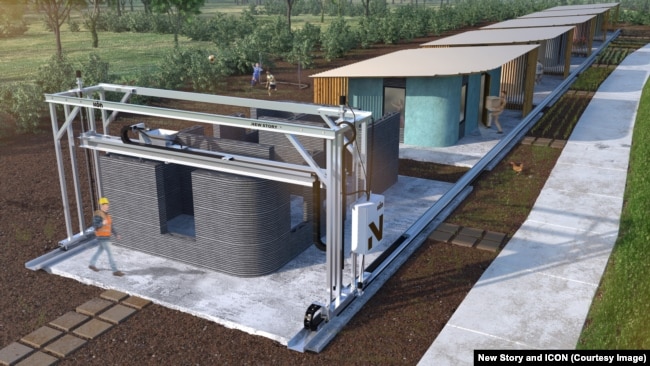It is axiomatic that the three main value factors in real estate are, in order of importance, location, location, and location.
That is to say, people are willing to pay a premium to live in the areas that they consider most desirable. For example, a 1,500 ft2 apartment in Manhattan will bring many times the monthly rental of a 1,500 ft2 apartment in Keokuk, Iowa. In my own life, I own a 3,500, 4 bedroom house on a half acre lot in suburban Pittsburgh. If I wanted to move to a desirable urban neighborhood with spending additional money, I could take the proceeds of selling my house and MAYBE get a 1,000ft2 condo in Shadyside or Squirrel Hill.
Working class families, if they do reasonably well, start their lives in apartments in working class neighborhoods, graduate up to modest homes in similar areas, and ASPIRE to improve their lot by eventually moving to a posh suburban neighborhood or a more desirable city neighborhood, where the schools are good, the streets are safe and picturesque, the police are friendly, and the mayor is not corrupt.
This is the real estate scenario that working class and middle class people live their lives with.
And yet there are forces within the political spectrum who DEMAND that this real estate paradigm be violated in order to accommodate - truth be told - inner city Black people. In all of our big cities, any time a major real estate project is planned, they demand that if any residential units are planned, they must include a significant number of "affordable housing" units. And the developers - who must kiss the asses of the various political commissions and "authorities" - do the absurd calculation of, "how many market-based units must I have and how badly can I screw those tenants, in order to subsidize the demanded number of 'affordable housing' units?"
This is nonsense, on steroids. If you want to live in those neighborhoods, then YOU HAVE TO WORK AND BE SUCCESSFUL IN ORDER TO PAY FOR THE PRIVILEGE! Nobody should get a government-subsidized ticket into a neighborhood where THEY CANNOT AFFORD TO LIVE. Low-cost rental units should be built in the parts of the area where real estate is cheapest. It should go without saying.
Nobody is going to subsidize me to live in a neighborhood where I cannot afford the rent or mortgage payments. And why should they?
News stories of these real estate developments go on constantly around the country, and nobody even mentions the fact that demanding "affordable housing" in high-rent districts is perverse and counter-productive. It abuses the developers, other renters, and who knows who else, in order to accommodate a number of people who, in fact, cannot afford to live there.
Fuck 'em. Like every other working and middle class person in the country, they should live where they can afford to live. And if they don't like that neighborhood, maybe they will work harder so they can move somewhere nicer. Like everyone else has done for decades.
That is to say, people are willing to pay a premium to live in the areas that they consider most desirable. For example, a 1,500 ft2 apartment in Manhattan will bring many times the monthly rental of a 1,500 ft2 apartment in Keokuk, Iowa. In my own life, I own a 3,500, 4 bedroom house on a half acre lot in suburban Pittsburgh. If I wanted to move to a desirable urban neighborhood with spending additional money, I could take the proceeds of selling my house and MAYBE get a 1,000ft2 condo in Shadyside or Squirrel Hill.
Working class families, if they do reasonably well, start their lives in apartments in working class neighborhoods, graduate up to modest homes in similar areas, and ASPIRE to improve their lot by eventually moving to a posh suburban neighborhood or a more desirable city neighborhood, where the schools are good, the streets are safe and picturesque, the police are friendly, and the mayor is not corrupt.
This is the real estate scenario that working class and middle class people live their lives with.
And yet there are forces within the political spectrum who DEMAND that this real estate paradigm be violated in order to accommodate - truth be told - inner city Black people. In all of our big cities, any time a major real estate project is planned, they demand that if any residential units are planned, they must include a significant number of "affordable housing" units. And the developers - who must kiss the asses of the various political commissions and "authorities" - do the absurd calculation of, "how many market-based units must I have and how badly can I screw those tenants, in order to subsidize the demanded number of 'affordable housing' units?"
This is nonsense, on steroids. If you want to live in those neighborhoods, then YOU HAVE TO WORK AND BE SUCCESSFUL IN ORDER TO PAY FOR THE PRIVILEGE! Nobody should get a government-subsidized ticket into a neighborhood where THEY CANNOT AFFORD TO LIVE. Low-cost rental units should be built in the parts of the area where real estate is cheapest. It should go without saying.
Nobody is going to subsidize me to live in a neighborhood where I cannot afford the rent or mortgage payments. And why should they?
News stories of these real estate developments go on constantly around the country, and nobody even mentions the fact that demanding "affordable housing" in high-rent districts is perverse and counter-productive. It abuses the developers, other renters, and who knows who else, in order to accommodate a number of people who, in fact, cannot afford to live there.
Fuck 'em. Like every other working and middle class person in the country, they should live where they can afford to live. And if they don't like that neighborhood, maybe they will work harder so they can move somewhere nicer. Like everyone else has done for decades.


